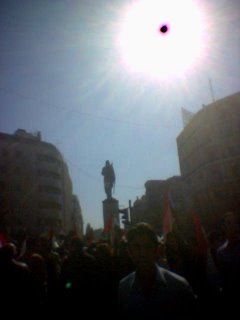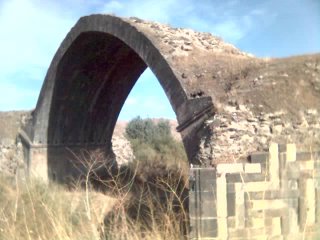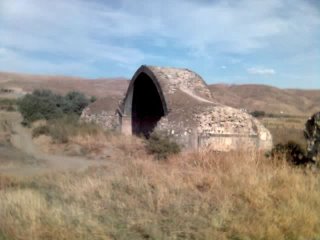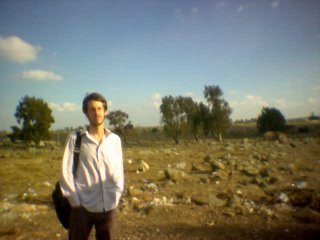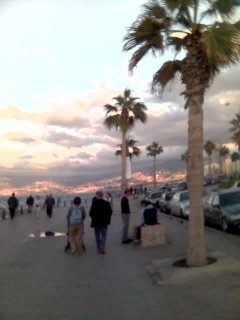Monday, November 14, 2005
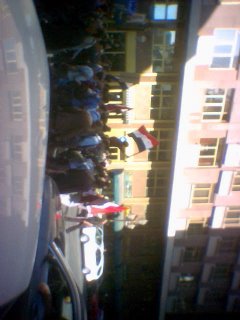




This was the day when President Assad gave a speech and several thousand of his supporters came bearing flags. Of course it was a heavily organised march. Those employed by the government (many people in this deeply beaurocratised country, where you can't so much as sneeze without getting a set of stamps and a form "to be filled out in triplicate") were out in force, as we’ll as schoolchildren, who had needless to say been bussed in from their schools by teachers.
Much as crowds might hustle and bustle in Leicester Square on the night of a film premiere, hoping to catch a glimpse of the latest film-star, it was clear that a view of President Bashar was the sole aim of many. Indeed, after his speech began, at one of the buildings of the University of Damascus, many people began to leave. I caught a glimpse of him, waving as he walked up the steps into the building. His speech, long but relatively simple to understand if you were in a place with decent sound (I was listening to it on my portable radio), went through the main issues currently facing Syria. I won't bore you with the details; you can easily find the full text in Arabic and English online (try the Syrian News Agency website).
Part of what was interesting, though, was the fact that so many people were there out of conviction, at the same time. I was reading Amin Maalouf's book On Identity at the time (started well, but eventual disappointment) so partly my thoughts reflect that stimulus. Those demonstrating out of personal conviction weren't (at least this is what I drew from my own conversations with demonstrators) doing so out of deep love for their President (we needn't go into why there might be antipathy here...) but merely as a reaction to a perceived (and it's not just perceived for sure) western aggression against their country. People who wouldn't normally spare it a second thought - such essentially nationalist beliefs - are now being forced into this view.
And it's their right to it, certainly. However the same ugly thoughts reared their heads in class a couple of days after the demonstration. One of our teachers, in an effort to get us to speak I tell myself, got very defensive (the image of a goat or ram backed against a corner is appropriate) about Syria: "take your freedom and democracy"; "we don't want it here"; "we're happy as we are" etc. Anyway, we eventually got talking about Hama (and the 1982 massacre by Syrian forces of some 10-20000 inhabitants of the city) and the teacher said in response to some comment or other: "I give thanks for those that died in Hama so that we don't now suffer their actions" (this in the context of the conversation that the teacher had previously alleged that many terrorists and bad people were living there). I don't really have any constructive comment in reaction to that, save to say that I think the teacher's previous comments must be viewed in the context of an imposed defence of ones country. People who wouldn't normally need or want to express such opinions...you know the rest.
Much as crowds might hustle and bustle in Leicester Square on the night of a film premiere, hoping to catch a glimpse of the latest film-star, it was clear that a view of President Bashar was the sole aim of many. Indeed, after his speech began, at one of the buildings of the University of Damascus, many people began to leave. I caught a glimpse of him, waving as he walked up the steps into the building. His speech, long but relatively simple to understand if you were in a place with decent sound (I was listening to it on my portable radio), went through the main issues currently facing Syria. I won't bore you with the details; you can easily find the full text in Arabic and English online (try the Syrian News Agency website).
Part of what was interesting, though, was the fact that so many people were there out of conviction, at the same time. I was reading Amin Maalouf's book On Identity at the time (started well, but eventual disappointment) so partly my thoughts reflect that stimulus. Those demonstrating out of personal conviction weren't (at least this is what I drew from my own conversations with demonstrators) doing so out of deep love for their President (we needn't go into why there might be antipathy here...) but merely as a reaction to a perceived (and it's not just perceived for sure) western aggression against their country. People who wouldn't normally spare it a second thought - such essentially nationalist beliefs - are now being forced into this view.
And it's their right to it, certainly. However the same ugly thoughts reared their heads in class a couple of days after the demonstration. One of our teachers, in an effort to get us to speak I tell myself, got very defensive (the image of a goat or ram backed against a corner is appropriate) about Syria: "take your freedom and democracy"; "we don't want it here"; "we're happy as we are" etc. Anyway, we eventually got talking about Hama (and the 1982 massacre by Syrian forces of some 10-20000 inhabitants of the city) and the teacher said in response to some comment or other: "I give thanks for those that died in Hama so that we don't now suffer their actions" (this in the context of the conversation that the teacher had previously alleged that many terrorists and bad people were living there). I don't really have any constructive comment in reaction to that, save to say that I think the teacher's previous comments must be viewed in the context of an imposed defence of ones country. People who wouldn't normally need or want to express such opinions...you know the rest.


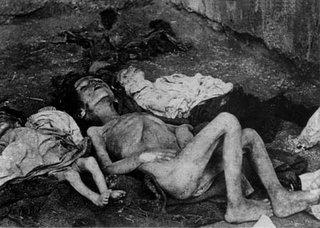

A little background on the Armenian genocide of 1915. Approximately 1.5 million are said to have died, either as a direct result of action (shootings etc) or indirectly from the long marches that Armenians were forced to embark upon (pictured, and more on this later).
As evidence of Turkish knowledge/planning we have the Turkish Interior Minister writing on 15th September 1915: "You have already been informed that the Government...has decided to destroy completely all the indicated persons living in Turkey...their existence must be terminated, however tragic the measures taken may be, and no regard must be paid to either age or sex, or to any scruples of conscience."
Why, you might well ask? Well it's inevitably part to do with the fact that some Armenians (a sizeable number, not just a few) were supporting and fighting with their Christian enemies against Ottoman Turkey in the First World War. But also because nationalists with racist creed came into control of the power behind the government around 1915.
As evidence of Turkish knowledge/planning we have the Turkish Interior Minister writing on 15th September 1915: "You have already been informed that the Government...has decided to destroy completely all the indicated persons living in Turkey...their existence must be terminated, however tragic the measures taken may be, and no regard must be paid to either age or sex, or to any scruples of conscience."
Why, you might well ask? Well it's inevitably part to do with the fact that some Armenians (a sizeable number, not just a few) were supporting and fighting with their Christian enemies against Ottoman Turkey in the First World War. But also because nationalists with racist creed came into control of the power behind the government around 1915.
There had also been a relentless (well-documented) anti-Turkish campaign by Armenian terrorists since the late 1880s, perhaps 1890s, i.e. a long time. This included the murder of any senior Turks they could find; politicians, ambassadors, family of the emperor, you name it. That caused a lot of resentment, as so many prominent Turks did get killed by it. At the same time, the Armenians did have a serious plan to set up a Greater Armenia,which would have meant carving out a big big part of Eastern Anatolia. They also had got external support for this, from powers such as Russia, who simply wanted to undermine the Ottomans to themaximum extent possible. The Armenians had also been collaborating in the WWI operations with the powers fighting against Turkey, and had organized a number of units fighting with the Allies in the war. So they were widely seen by the population as traitors.
On 24th April 1915 (henceforth the Day of Armenian Genocide) arrests were made of 600 of the leading Armenian intelligentsia and businessmen, as well as 5000 others living in the Armenian quarters. Kurds, it should be noted, took a notable role in the perpetration of crimes against the Armenians, particularly in the north of Iraq and Syria. Killings, hangings, rape, mass population movements. It was all there. Robert Fisk notes in his book that the huge number of bodies in the Marqadeh killing-ground may have been the cause for the diversion of the course of the river Khabur.
In a cave at Shedadiyye (Syria), thousands were gassed (by rudimentary means; a smoky fire positioned in front of the cave's entrance. Thousands died in that cave to save bullets. Some convoys of Armenians were driven across huge distances. For example Marash (Turkey) to Aleppo (Syria) which was 150km, then 300km eastwards to Deir ez-Zor, then back north only to die in Marqadeh, another 150km away.
Here, copied from Philip Marsden's The Crossing Place, is an account of one of these "dismal convoys":
Day 1 - 3000 Armenians leave Kharput. Escort of seventy zapatieh under command of Faiki Bey.
Day 2 - Faiki Bey levies 400 lira from convoy for its safety. Faiki Bey disappears.
Day 3 - First women and girls taken by Kurds. Open violation by zapatieh.
Day 9 - All horses sent back to Kharput.
Day 13 - 200 lira levied by zapatieh. zapatieh disappear.
Day 15 - Kurdish 'guard' take 150 men and butcher them, then rob convoy. Joined by another convoy from Sivas. Numbers swell to 18000.
Days 25-34 - Harassed by villagers. Many women taken.
Day 40 - Eastern Euphrates. Blood-stained clothes on riverbank; 200 bodies in water. Armenians forced to avoid being thrown in water.
Day 52 - Kurds take everything, including clothes.
Day 52-9 - Naked, without food or water. Women bent double from shame. Hundreds die beneath hot sun. Forced to pay for water. Money hidden in hair, mouth, genitals. Many throw themselves into the wells. Arab villagers give them pieces of cloth out of pity.
Day 60 - 300 remain from 18000.
Day 64 - Men and the sick burned to death.
Day 70 - 150 arrive in Aleppo.
Part of the distinction of the 1915 massacres is their systematic nature, as opposed to those of the 1890s. It was widely described in the west. Arnold Toynbee himself wrote a report for the British government in 1915 entitled, The Treatment of Armenians in the Ottoman Empire 1915-6. US and UK diplomats (including Gertrude Bell) bore witness to what they saw - incidentally some of the most referred-to witness testimony that emerged. Germans (building Turkey's railway network) witnessed the use of trains as human cattle-trucks. The New York Times, now a staunch holocaust-denier, had front-page coverage of the Armenian genocide every day.
In the aftermath of WW1, there was a lack of interest, though, in pressing for trials or justice of any other sort. The Armenians were similarly betrayed by the Treaty of Sevres (10 August 1920). There was a fear that an admission of culpability would give rise to claims for compensation; indeed insurance firms in the US have had a steady flow of such requests.
Bush Mk, at a meeting with Armenian communities during his first election campaign, said on 19th February 2000 that, "the Armenians were subjected to a genocidal campaign...an awful crime in a century of bloody crimes against humanity. If elected president, I would ensure that our nation properly recognises the tragic suffering of the Armenian people." This was, needless to say, forgotten later down the line. Later speeches referred only to "infamous killings", and their "bitter fate", no longer to genocide.
On 24th April 1915 (henceforth the Day of Armenian Genocide) arrests were made of 600 of the leading Armenian intelligentsia and businessmen, as well as 5000 others living in the Armenian quarters. Kurds, it should be noted, took a notable role in the perpetration of crimes against the Armenians, particularly in the north of Iraq and Syria. Killings, hangings, rape, mass population movements. It was all there. Robert Fisk notes in his book that the huge number of bodies in the Marqadeh killing-ground may have been the cause for the diversion of the course of the river Khabur.
In a cave at Shedadiyye (Syria), thousands were gassed (by rudimentary means; a smoky fire positioned in front of the cave's entrance. Thousands died in that cave to save bullets. Some convoys of Armenians were driven across huge distances. For example Marash (Turkey) to Aleppo (Syria) which was 150km, then 300km eastwards to Deir ez-Zor, then back north only to die in Marqadeh, another 150km away.
Here, copied from Philip Marsden's The Crossing Place, is an account of one of these "dismal convoys":
Day 1 - 3000 Armenians leave Kharput. Escort of seventy zapatieh under command of Faiki Bey.
Day 2 - Faiki Bey levies 400 lira from convoy for its safety. Faiki Bey disappears.
Day 3 - First women and girls taken by Kurds. Open violation by zapatieh.
Day 9 - All horses sent back to Kharput.
Day 13 - 200 lira levied by zapatieh. zapatieh disappear.
Day 15 - Kurdish 'guard' take 150 men and butcher them, then rob convoy. Joined by another convoy from Sivas. Numbers swell to 18000.
Days 25-34 - Harassed by villagers. Many women taken.
Day 40 - Eastern Euphrates. Blood-stained clothes on riverbank; 200 bodies in water. Armenians forced to avoid being thrown in water.
Day 52 - Kurds take everything, including clothes.
Day 52-9 - Naked, without food or water. Women bent double from shame. Hundreds die beneath hot sun. Forced to pay for water. Money hidden in hair, mouth, genitals. Many throw themselves into the wells. Arab villagers give them pieces of cloth out of pity.
Day 60 - 300 remain from 18000.
Day 64 - Men and the sick burned to death.
Day 70 - 150 arrive in Aleppo.
Part of the distinction of the 1915 massacres is their systematic nature, as opposed to those of the 1890s. It was widely described in the west. Arnold Toynbee himself wrote a report for the British government in 1915 entitled, The Treatment of Armenians in the Ottoman Empire 1915-6. US and UK diplomats (including Gertrude Bell) bore witness to what they saw - incidentally some of the most referred-to witness testimony that emerged. Germans (building Turkey's railway network) witnessed the use of trains as human cattle-trucks. The New York Times, now a staunch holocaust-denier, had front-page coverage of the Armenian genocide every day.
In the aftermath of WW1, there was a lack of interest, though, in pressing for trials or justice of any other sort. The Armenians were similarly betrayed by the Treaty of Sevres (10 August 1920). There was a fear that an admission of culpability would give rise to claims for compensation; indeed insurance firms in the US have had a steady flow of such requests.
Bush Mk, at a meeting with Armenian communities during his first election campaign, said on 19th February 2000 that, "the Armenians were subjected to a genocidal campaign...an awful crime in a century of bloody crimes against humanity. If elected president, I would ensure that our nation properly recognises the tragic suffering of the Armenian people." This was, needless to say, forgotten later down the line. Later speeches referred only to "infamous killings", and their "bitter fate", no longer to genocide.


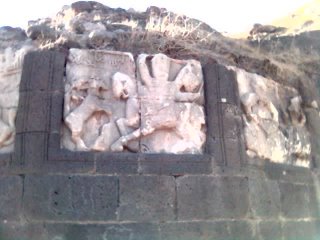


The consensus was that Iraq wasn't going to be a reasonable possibility so we opted to go to Ain Diwar, the site of a Roman bridge where the borders of Iraq, Turkey and Syria meet in the north-eastern corner of Syria. We hired a driver for the afternoon and headed east.
The bridge itself is only the remaining arch of a bridge built by the Romans (or the Romanians, as the signs inform the meagre handful of tourists who make it out here), a remote and heavily militarised site. We had to leave our passports with one of the checkpoints along the way, presumably to ensure that we didn't try to skip the border into Turkey...
There were sandstone panels depicting the signs of the zodiac on one side (pictured), as well as a black-and-white mosaic round the back (also pictured). The Roman camp of Bezabda once stood on this side of the river, and the bridge was, historians tell us, built to give access to Roman-occupied Anatolia.

We arrived in Qamishli on the eve of Eid's beginning (for Sunnis at least; Shia Muslims begin their fast a day later) and the city was bustling in a way that reminded me of Christmas festivities in provincial country towns in southern Germany. The same dark cheer, tables of wares displayed, twinkling lights. All that was missing was gluhwein.
Border towns - the centre of town is 1000m away from the border crossing into Turkey - have an allure all unto themselves. Perhaps the fact that most of the people are strangers, all on their way to somewhere else, nobody quite achieving that lived-in familiarity that residents of capital cities, for instance, often display. I prefer the border atmosphere, and could easily imagine living in a town such as Qamishli, surely a centre for blossoming intrigues and the like...
We weren't quite sure what we planned to do in Qamishli. It had something to do with borders, and something to do with Kurds we hoped, and perhaps had something to do with Iraq. A teacher back in Damascus had talked wistfully of kaliiche, a Qamishli cookie speciality, and first we went in search of that. It turned out they tasted like the Austro-German lebkuchen, or I guess like the special ingredient that goes into lebkuchen as the texture was quite different. We ended up with 3.5 kilos of cookies to take back with us to Damascus (thanks to our kind driver).
Qamishli, at any rate, boasts two, perhaps three, restaurants that one might distinguish from the usual kebab-joints and hunger-mahalls. Sahara, which seemed permanently closed during our stay, probably due to Eid, and Gabriel's, where we ate on our first evening in town. With a fully-stocked bar, we tucked into a full half-Syrian half-European meal. Hummous, Fattoush, Tabbouleh, Kibbe ma'liiyeh, Mutabbal, Chips, Beef with mushrooms etc. All rounded off with the misnomer of the Jordanian-brewed Pennsylvania beer.
Later that evening, meandering back to our hotel we stopped off at yet another sweet-shop (this, I might add, after a session on the world's slowest internet connection in an internet cafe) in search of our mystery sweet (we didn't know the name at this point). At any rate, we ended up discussing with the owner about hiring a driver to drive us to Iraq, and then, after various twists and turns, discussing the matter further with a Kurdish 'fixer' of sorts. It turned out to be a dead-end, not least because of our poor timing bang at the beginning of Eid, but also because he only began to grasp what we wanted to do in Iraq after several attempts at an explanation. The shop-owner and fixer talked between themselves in Kermanchi Kurdish (the Turkish variant/dialect, as distinguished from Sorani Kurdish, which is much closer to Arabic) and I enjoyed recognising the odd Turkish word. It was a jolt into the kingdom of the new, that which waits to be discovered. Always one for a headlong dive into mystery, it made me very happy to be in Qamishli.
Next morning, having to send a file via email to London urgently, I searched and asked around for an open internet café. In the end, it was a middle-aged Armenian man who opened his shop for me so I could use his computer to connect to the internet - imagine that happening in London on New Year's Day...
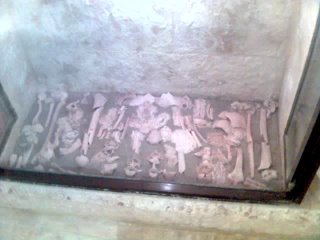
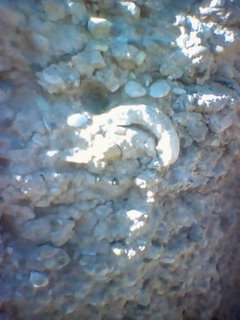

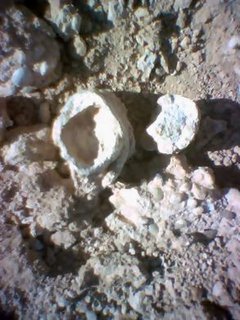

Marqadeh is a dusty roadside settlement on the banks of the river Khabur. We hopped off the bus in the middle of nowhere, not really knowing what we were looking for. Well, mass graves, actually, but we didn't know where. Wandering up the hill in the direction of what turned out to be a shrine to those Armenians killed in Marqadeh. Around 50,000 are reported to have been killed on what once were the banks of the river. As it turns out, the river has changed course since 1915 so when we went down to the river we were met by a bemused village chief of police (Nader) who was curious to know why we were there - what with the dearth of tourists 'n all…
Anyway, he rang people in Damascus over a cup of tea in his wooden hut to check that we were "clean" and then drove us on the back of his motorcycle back to the shrine, behind which we might be able to find bones. Splashing through the courtyard of the shrine - being washed in the sun by the old Armenian custodian - we looked in the church with glass cabinets (again) of Armenians' bones (pictured). Then I signed the register, mostly in Armenian barring "Jenny and Tom"'s best wishes on behalf of the American people.
It was possible, behind the church, and on the banks of where the river must have once been, to find the odd bone fragment or two (pictured) but seeing as the hill also acted as a slipstream for spring floods (I'm guessing) the surface was just made up of slick. Nader wasn't really interested in the Armenians that Felix eventually found in the hillside. He wanted to discuss Syria and our relationship to it as foreigners. He talked about countries at war, the Mehlis report, terrorists ("anyone who acts against humanity"), as well as that it was sometimes necessary to conduct "cleanup operations - amaliyaat al-tandthiif" for the sake of peace and stability - at which point he mentioned Hama, of course. More about the ubiquitous Hama later, though.
We waited for some time at the roadside for a minibus going northwards, and eventually ended up in Hassake (then another motorcycle-taxi ride to the bus station) for the connecting bus to Qamishli.
Sunday, November 13, 2005


Having just finished Robert Fisk's new tome, The Great War for Civilisation, I decided to see some of what he had written about for myself, nearly always the best way to learn about something. Focusing on his chapter on the Armenian holocaust, I set out at the same time as other Syrians were heading back to their families to celebrate the Eid al-fitr, the formal end of the month of fasting, ramadan, which Muslims undertake. The bus station, as always, was a manic conglomeration of noise and smell. A bus left for Deir ez-Zor, my first engagement, fairly soon, however.
Oil is perhaps the most important aspect of this half-way-house city. Extensive fields were found in 1984, and since then the city has grown in reflection of this new natural wealth. The city boasts a well-organised archaeological museum, an outdoor swimming pool for the sweat-sodden months of summer, and a 1920s suspension bridge built by France when Syria (and Lebanon) were under her mandate. It was for the Armenian Church, as well as to see friends living there, that we had stopped off. Opposite our hotel, on a lettuce-crisp morning, we crossed over to the Church and were greeted by a young boy. He took us round the church and eventually we reached the underground museum, the most interesting part of the church. This detailed, in extracts from speeches, books and large-print photos, the exact details of the 1915 Armenian Holocaust. It was instructive to look at the map detailing the movements of people around the Syrian and Turkish lands. There are also bones in cases on display, bones of those since uncovered from graves.
Deir ez-Zur lacks the essential qualities for a ‘must’ on the tourist ‘trail’. It is a simple town, with only a ramshackle amusement park, an outdoor swimming pool (to assuage the dense summer heat) and an excellent archaeological museum as specific ‘activities’. The nature of Deir ez-Zor, though, works against the specific. As a town, its quality is in-betweenness, the lack of will to be anything specific. It was an attractive place to stop over at, on account of the air – a much needed break from the oppression of Damascus. There was a moment at night, standing on the bridge above the Euphrates, listening to the rustle and whispering of the leaves in the trees around, where you might have found some peace or rest, or whatever you want to call it. Needless to say, there are relatively few foreigners there ‘seeing the sights’. It’s mainly a staging-post on the way to Qamishli, and thus onward to Turkey, or as a crossroads to visiting the ruins at Dura Europos or Mari on the Iraqi border.



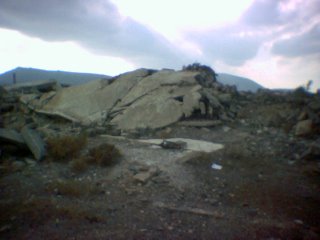
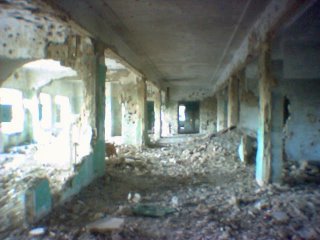
Visited Qunaitra about 3 weeks back with Felix. Had been last year, but interesting to revisit with the new perspective that time generally provides. Initially 'lost' by Syria in the summer of 1967, the Israelis drove the population of some thousands out and then totally demolished the town [really, you're lucky to see standing buildings] before the hand-over to Syria (mediated by the UN) in 1974. On this occasion, the then-president Hafez Al-Assad declared that the town would be rebuilt. In the end what happened was that it was left exactly untouched, largely for its propaganda value. To visit, you need to get a military permit (from a building just round the corner from my house) which allows you to enter the UN-administered demilitarised zone at the Golan Heights. Photos given here show what was left behind...
Saturday, November 12, 2005
Finished Ishiguro's Never Let Me Go, a book filled with insinuated melancholy. As John Harrison put it:
"By the final, grotesque revelation of what really lies ahead for Kathy and Tommy and Ruth, readers may find themselves full of an energy they don't understand and aren't quite sure how to deploy. Never Let Me Go makes you want to have sex, take drugs, run a marathon, dance - anything to convince yourself that you're more alive, more determined, more conscious, more dangerous than any of these characters. This extraordinary and, in the end, rather frighteningly clever novel isn't about cloning, or being a clone, at all. It's about why we don't explode, why we don't just wake up one day and go sobbing and crying down the street, kicking everything to pieces out of the raw, infuriating, completely personal sense of our lives never having been what they could have been." (review in The Guardian books supplement)
Sunday, November 06, 2005
Wild sunset on Saturday evening as I strolled back from Robert's house on the Corniche in Beirut. It's nice to walk among palm-trees. Bought some books in Beirut (Burning Tigris: a history of the Armenian genocide, Seymour Hersh's Chain of Command, and Ilan Pappe's new history of the Middle East), and dropped off some special Qamishli cookies at the Mashlabs house as an Eid present, but they weren't at home. Had planned to visit friends in Chatila refugee camp, but the day wore on and it was eventually too late. Trip worth it just for the sunset...
Saturday, November 05, 2005



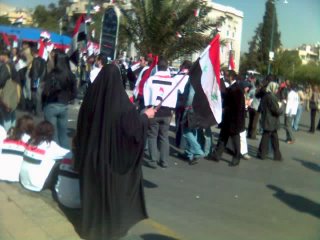
Damascus, Syria
Pictures of the moderately enthusiastic demonstration outside the US embassy last Tuesday 1st November around noon. Placards with words such as "Justice" were parade before the large police presence pictured. Indeed, even though the demonstration wasn't really a threat to the Syrian government, hundreds of riot police sat in cars in side-streets adjoining the main road. The protesters now have a tent outside the US Embassy. A similar night-and-day protest is being pursued by students outside the Ministry of Culture just outside of the centre of town.
